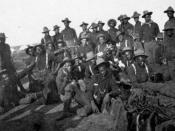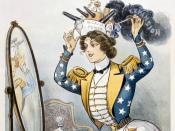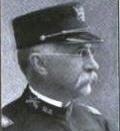Hannah Johnston
Scheetz, HOTA II, P3
October 2, 2014
Spanish-American War FRQ
Economics proved to be a critical driving force for the start of the Spanish-American War. With extreme interest in Cuban sugar, heavy pressure for expansionism, and Wall Street's desire to increase foreign investment, it became increasingly apparent that war was the most practical way to go about making those aspirations a reality.
With industrialization booming, creating countless job opportunities, a railroad system that enabled easy nationwide trade, and western expansion fulfilling our country's Manifest Destiny, the United State's economic standpoint was strong to say the least. But, when the Panic of 1890 occurred, both industrial and agricultural businesses' profits suffered greatly. Surpluses of products were continuously produced, causing supply to greatly outweigh demand. A wave of immigrants journeyed to the U.S., which initially caused economic stress, but ended up becoming a cheap labor solution for factories.
As a result, many Americans were put out of work. The factories had a strategy: not to decrease production, but to find a new market.
Cuba played an essential role in the U.S.'s economy. When trade started to wane, the U.S. started to become aggravated with the loss of shipping. In the past, Cuba had provided a great source of financial resources. With the Cuban affair occurring, our income was depleting and our patience growing thin. The U.S. needed the economic riches of the past quickly, and although war was not the solution initially, it soon became clear that it was the most effective way to meet the needs of the U.S.
The Treaty of Paris (1898) made it so that Spanish powers relinquished control of Puerto Rico, the island of Guam, and the Philippine islands to the U.S. Gaining these territories was crucial to expanding power and influence across...


